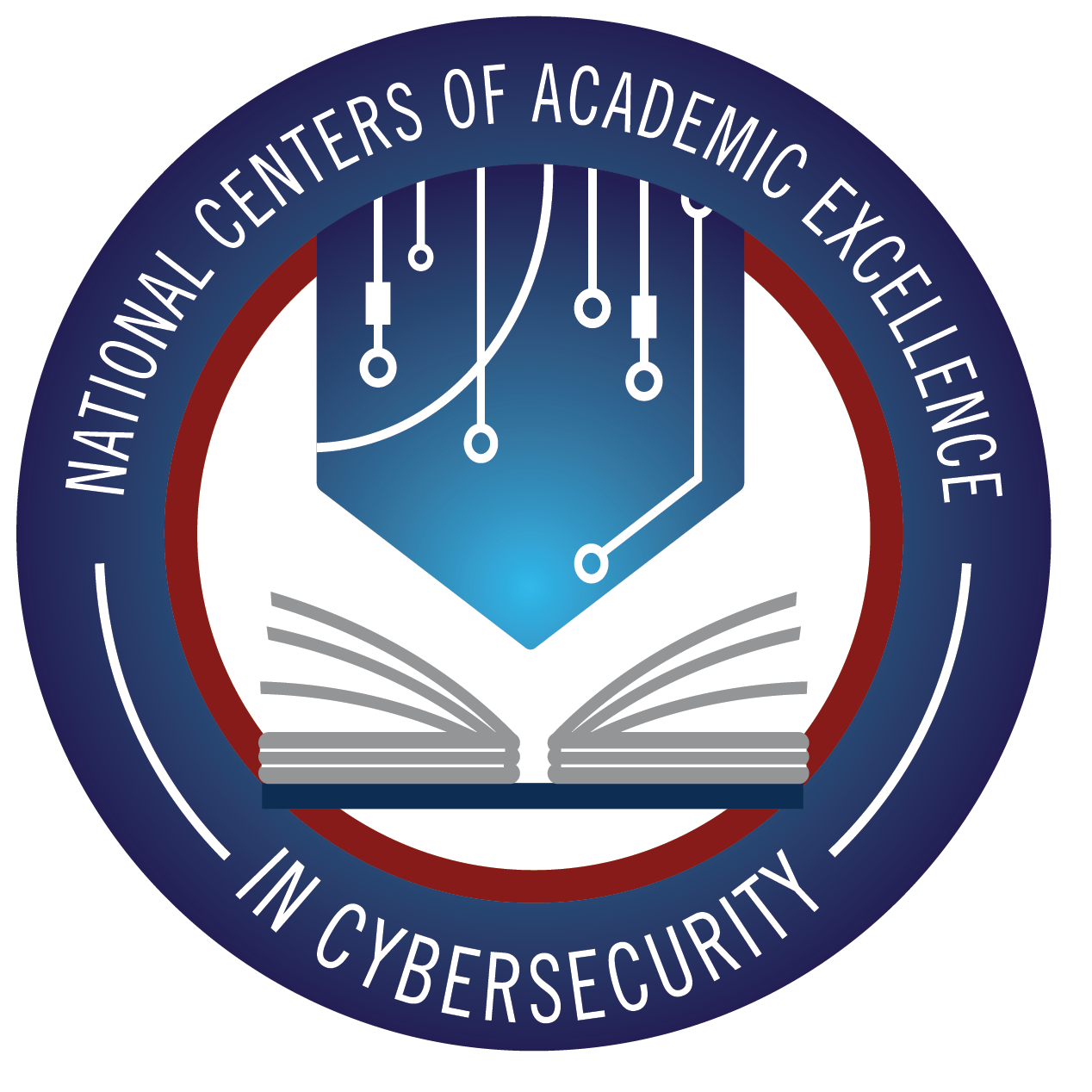Fairfield offers several financial resources for our graduate students to help you attain your advanced degree. Exceptional graduate students pursuing the MS in Cybersecurity program may be considered for the Graduate Merit Scholarship

Gain practical training with our virtual, state-of-the-art cybersecurity lab that offers students an interactive learning experience using real-world applications.
Choose between the management or technical concentration track, allowing your degree to be tailored to your desired field/interests.
Learn from industry experts whose work has included leading corporate information security teams, engineering web-based and native applications, and investigating international technology information crimes.
Draw on the professional network Fairfield has built in the engineering industry as you connect with experts who can help propel your career forward.
The 100% online MSCYB was specifically designed with flexibility in mind to meet the needs of full-time and part-time students. The School of Engineering at Fairfield University has been designated a National Center of Academic Excellence in Cyber Defense (NCAE-CD) by the National Security Agency, recognizing the school’s commitment to cybersecurity education and its role in contributing to the protection of the National Information Infrastructure.
The MSCYB emphasizes the need for practical knowledge and understanding of computer systems. Students will learn to recognize best practices and master the fundamentals of cybersecurity, including threats and vulnerabilities and the tools, technologies, and strategies used to manage it.
Tuition for the MSCYB is $31,650 ($1,055 per credit hour).
Cybersecurity Certificate: $12,660 ($1,055 per credit hour).
Please see the Tuition and Financial Aid page for more information.
The MSCYB program is open to students with bachelor’s degrees in any discipline. An undergraduate GPA of 3.0 or better is preferred but not required.
Applicants that do not have an education or experience in information technology may be required to complete six credits of bridge coursework during their first year of the program. Transcripts and your resume will be used to determine if the bridge courses are required.
No GRE required.
Please note that Fairfield University cannot supply F-1 Visa I-20 documentation for international students enrolling in online or low-residency programs, like the MS in Cybersecurity.
Here’s what you will need to apply:

Andy Lee is an adjunct professor of the Master of Cybersecurity program at the School of Engineering. He currently works for the FBI and focuses primarily on cyber incident response, reverse engineering malware, and digital forensics. He holds a Master's in Cybersecurity Policy & Governance from Boston College and brings industry experience in working with cyber law and regulatory compliance.

Dr. Mirco Speretta's early research focused on the creation of user profiles that improve search results. He spent 10 years as a director of technical engineering, acting as a security incident manager for mobile websites and applications.

Hank Foss is an adjunct professor in the Computer Science and Cybersecurity program within the School of Engineering and Computing. As the Chief Information Security Officer (CISO) for Fairfield University, he specialized in incident response, cybersecurity operations, vulnerability management, and policy compliance, with backgrounds in military, finance, insurance, and higher education, Hank brings practical, real-world insights and tool sets to his student, preparing them to tackle the evolving challenges in cybersecurity.

Dr. Akshay Mathur is an Assistant Professor in the School of Engineering and Computing. He graduated with a Ph.D. in Computer Science Engineering in 2022 and now teaches undergraduate and graduate cybersecurity courses. His area of research is building AI-based OS security solutions, digital forensics of apps, and cybersecurity education.
Earning an MSCYB from Fairfield University positions you for a wide range of career options in the in-demand field of cybersecurity. According to the U.S. Bureau of Labor Statistics, overall employment of cybersecurity occupations is projected to grow at least 33% from 2020 to 2030.
Gain a firsthand perspective from a Fairfield MS in Cybersecurity graduate, Ralph Riley, MS’24, as he shares his experience in Fairfield University’s online master’s in cybersecurity program. In this video, Ralph highlights how the program has advanced his career by equipping him with skills and knowledge in the cybersecurity field. He also shares how Fairfield’s online format fostered meaningful connections with both faculty and classmates, creating a dynamic and collaborative learning environment. Discover how Fairfield’s commitment to excellence in online education empowers professionals like Ralph to achieve their goals and make a lasting impact in the rapidly evolving world of cybersecurity.
Spring, Summer, or Fall
Full-time or Part-time
4-8 months
$12,240 ($1,020 per credit hour)
Credits – 3
This course gives students a fundamental understanding of current social engineering methods in the information security arena. Deception and human behavior is exploited to gain valuable information, which is very relevant to today’s growing security concerns. This course is another key class in the information security track within the software engineering program, and builds upon the weaknesses in the human factor. Areas of discussion will be methods, current trends, and most of all countermeasures. Instruction includes lectures and discussion assignments which involve analyzing current work places and social gatherings coupled with scenarios of exploitation. Previously SW 0530.
Credits – 3
This course is intended for individuals who need an understanding of the client-server environment, with any emphasis on network security. The OSI Model, network concepts and network architecture are discussed. The components that make up a network, including cabling, wiring hubs, file servers, bridges, switches, routers, network interface cards, network operating systems, and network software and hardware configurations are discussed. Network architectural concepts, wide area networks, remote access, and segmentation are discussed. Operating systems will be discussed and demonstrated. Featured is the seven-layer OSI model, the foundation of today’s communication protocols. Students will work with various security protocols and configure routers and switches with security methods. Previously SW 0404.
Credits – 3
This course is structured around enterprise and web applications and the data security associated with these applications. It encompasses the encryption schemes of transmission to execution of code and complete flight of an execution. Common countermeasure and best business practices that help ensure a solid security understanding are the objectives of the course. Previously SW 0531.
Credits – 3
This course covers current information security practices and countermeasures put in place to safeguard against security breaches. The course reviews internet infrastructures such as firewalls, IDS systems, and honey pots. Additional areas include risk analysis, computer-use policies, physical security, internet/intranet security, malware, firewall infrastructure, and current information security issues. Previously SW 0599.
Credits – 3
This course will introduce the foundations of security program management and familiarize students with the core concepts needed to build, deploy, and manage security controls and policy to protect against today’s cyber threats and regulations. Besides the theoretical underpinnings, emphasis will be put on practical experience of using security governance resources. Concepts like security policy/standards, governance, risk management, and program management will be key to ensuring effective security program management. The course will be a combination of lectures and hands-on collaborative working experience in building a security program.
Credits – 3
This course will introduce the foundations of vulnerability program management and familiarize students with the core concepts needed to build, deploy, and manage vulnerability management controls that help identify risk and help prioritize remediation and determine risk to protect against today’s cyber threats. Besides the theoretical underpinnings, emphasis will be put on practical vulnerability management experience. Concepts like vulnerability discovery, reporting and assessing risk, threat modeling, and security testing are key to managing a vulnerability management program’s risk posture. The course will be a combination of lectures and hands-on a collaborative working experience in building a vulnerability management program.
Credits – 3
This is a course designed to provide the student with the tools necessary to manage Windows servers. The topics include user management, installation and configuration of web servers, mail servers, FTP servers, LDAP and backup, and other routine systems and network administration. Previously SW 0448.
Credits – 3
This course will introduce the foundations of cloud computing, and familiarize students with the core concepts needed to build, deploy and manage applications in a cloud. Besides the theoretical underpinnings, emphasis will be put on practical experience of using cloud resources and services. Concepts like microservices and containers will be discussed in depth, as well as best practices for building successful cloud native applications and implications for development and operational processes. The course will be a combination of lectures and hands-on experience of a public cloud. Undergraduate equivalent: CPSC 3349. Previously SW 0449.
Credits – 3
This course will introduce the core concepts of detective and preventative security and the venues that threat agents use to compromise and breach systems. Students will learn to evaluate their environment for potential attacker entry points physical, virtual, and electronic, and come up with solutions to deploy to prevent intrusions. Emphasis will be placed on theoretical occurrences, but will also include practical experience of using prevention applications. Additionally, research on methodologies used by attackers will be required from outside resources (internet) which will be shared with the class as a whole. The course provides a current status of what is prevalent in the evolving cybersecurity domain.
Credits – 3
This course explores the requirements gathering, system analysis, software design methods and prototyping of software application following the software processes required for the production of high quality software. Techniques for creating documentation and using software development tools will be presented. Students will gain experience in software project management; requirements, analysis, and design; procedural maturity; social, ethical, cultural, and safety issues in software development; interpersonal skills for management and team membership; and the software engineering discernment of systems architecture. Undergraduate equivalent: SWEG 3301. Previously SW 0400.
Credits – 3
This course is designed to introduce fundamental concepts of object orientation techniques.Through the use of case studies and project work that has the student gradually building a large design specification, students will achieve an understanding of how complex applications are designed and built. Undergraduate equivalent: SWEG 3302. Previously SW 0401.
Credits – 3
In this course, students investigate visual analytics tools and techniques used to synthesize information and derive insight from massive, dynamic, ambiguous, and often conflicting data and to communicate the findings effectively for decision-making. Extensive use of case studies based on real-world events will be used to illustrate course concepts. Students will apply visual analytics techniques toward a focused research problem in a real-world application or a domain of interest. Undergraduate equivalent: CPSC 4322. Previously SW 0422.
Credits – 3
This course, which examines computational and theoretical accounts of human intelligence, includes knowledge representation, commonsense reasoning, planning, natural language understanding, machine learning, and deep learning. Undergraduate equivalent: CPSC 4355. Previously SW 0455.
Credits – 3
This course will provide a practical introduction to machine learning applications such as face recognition, clinical diagnosis, speech recognition, natural language processing, or image classification. Topics such as regression, classification, neural networks, deep learning, and ensemble methods will be discussed. Emphasis will be on how to choose appropriate machine learning and deep learning models and how to evaluate their performance. The class will be a combination of lecture and computer lab. Undergraduate equivalent: CPSC 4360.
Credits – 3
Topics covered include graphics programming, information visualization general principles, visualization techniques for one-dimensional, two-dimensional, and N-dimensional information, graph visualization, information visualization lifecycle: representation, presentation, interaction, perception, and interpretation, as well as theories behind information visualization, and focus+context techniques. This course also includes the implementation of techniques presented in lecture. Students are encouraged to devise new techniques, implement them, and determine their effectiveness. Students will be required to complete in-depth assignments, read, summarize, and present recent journal papers from the information visualization literature, and prepare term papers with regard to an information visualization research topic. Students will also be required to specify, design, implement, and document a semester-long software project related to information visualization. Undergraduate equivalent: CPSC 4521. Previously SW 0521.
Credits – 3
This course introduces the student to the techniques used and capabilities of modern pattern recognition systems with an emphasis on those that can learn and improve their performance as they are used. After a short review of some necessary mathematical concepts (probability, stochastic processes, and vector spaces), the student is introduced to the problem of representing real-world problems to a system. Selected real world applications are used to show examples of some valid representations (e.g. speech and handwriting) to provide insight and experience in the application of recognition systems. Several important recognition engines are then described and analyzed for their effectiveness in recognition/synthesis/learning systems. The use of additional knowledge bases dealing with the problem environment is then introduced to increase system performance and overall recognition system structures are discussed. Previously SW 0461.
Credits – 3
This course examines business intelligence concepts, methods and processes used to improve data-centric business decision support solutions with a particular focus on data mining techniques. Students will first examine the principles and practices of gathering and retrieving large volumes of data for analysis and synthesis. Next, students will examine analytical techniques for extracting information from large data sets. In particular, the course examines the following data mining techniques: classification, estimation, prediction, and clustering. During the course, students will also discuss knowledge management, how organizations manage and use the knowledge that they acquire, and presentation of data. Previously SW 0518.
Credits – 3
This course presents concepts and develops skills needed in designing, implementing, and troubleshooting local and wide area networks. Students design and configure LAN and WAN using routers and switches, learn the components of wireless networks, and how to configure and troubleshoot a network and optimize its performance. The course also provides numerous lab opportunities to configure and troubleshoot networks with Cisco routers and switches. Previously SW 0596.
Credits – 3
Prerequisite: MATH 5417 or SWEG 5301 or SWEG 5322 or SWEG 5530 or SWEG 6518.
In this two-semester capstone sequence, students form teams, perform a technical study, and design software systems based on either their customer’s requirements, develop, test, and deploy software systems. The results of these projects provide a library of case studies, designs, and software development techniques, and project management skills that are of general interest to local information technology professionals. A capstone prospectus, approved by your advisor, must be submitted to and accepted by the director of the program prior to starting the capstone sequence. Previously SW 0550.
Credits – 3
Prerequisite: SWEG 6961.
In this two-semester capstone sequence, students form teams, perform a technical study, and design software systems based on either their customer’s requirements, develop, test, and deploy software systems. The results of these projects provide a library of case studies, designs, and software development techniques, and project management skills that are of general interest to local information technology professionals. A capstone prospectus, approved by your advisor, must be submitted to and accepted by the director of the program prior to starting the capstone sequence. Previously SW 0551.
Visionary by nature.
Jesuit Catholic by origin.
The driving force of Fairfield is our mission — to impact the world. It prompts us to ask important questions, to embrace our social responsibilities, and to lead by example. And it’s what has made us a premier institution in the Northeast. Let the mission be part of your journey.
Fairfield offers several financial resources for our graduate students to help you attain your advanced degree. Exceptional graduate students pursuing the MS in Cybersecurity program may be considered for the Graduate Merit Scholarship